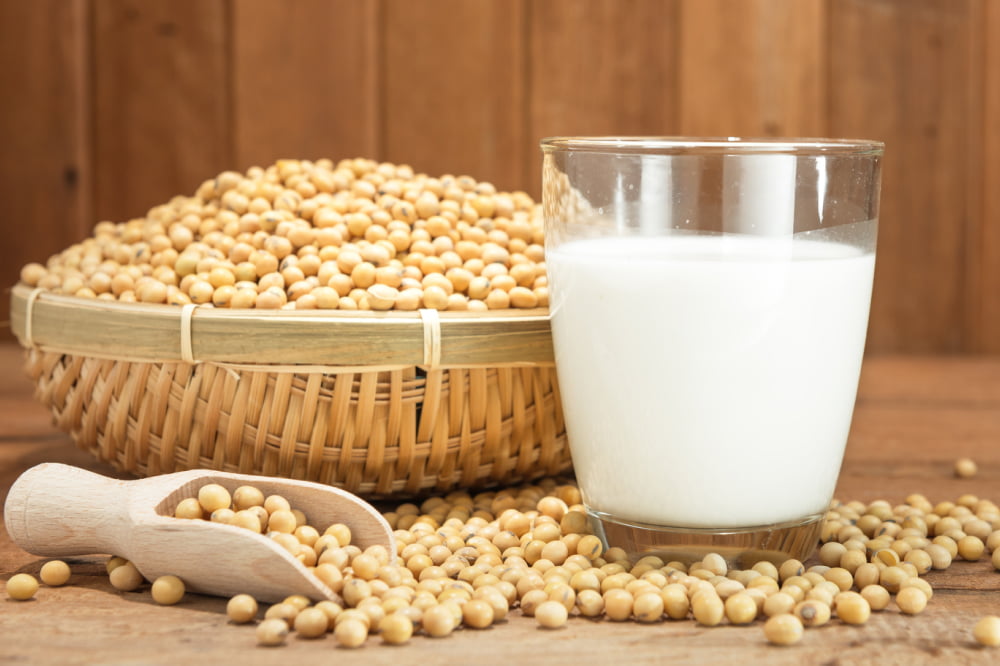
Soy types, nutritional value, and benefits
Soy is a common type of edible legume. Records of its consumption date back over 10,000 years, and it was initially grown and eaten in East Asia. There are numerous variants of soy today, and it is produced mainly in the U.S., China, Brazil, and Argentina. Soybeans are a great option for plant-based meals and snacks because they are also rich in fiber. Read below about the types of soy and soy nutrition facts.
Types of soy
While it is not possible to state all the soy variants available today, here are some of the most common types of soy products available in the market.
Edamame
Green soybeans in their pods are called edamame. They are ideal snacks because they are a whole food and can be found in the frozen food department of many supermarkets and organic food shops. The pods should be briefly boiled in gently salted water before eating the seeds straight from them. Edamame tastes somewhat sweet, like lima beans.
Tempeh
Tempeh is a soy product produced from cracked soybeans that have been infused with a healthy bacterium. After fermentation, it is shaped into flat blocks. It may be eaten as a stir-fry dish, as a salad accompaniment, and it may also be eaten with grains such as brown rice, barley, or millet.
Soy flour
Whole ground soybeans are processed to make soy flour. You can add it to breads, cakes, and cookies to raise their protein content. Since soy flour doesn’t contain gluten, it can’t be used in baking in place of wheat flour, but it can be added to other flours.
Black soybeans
Since soymilk lacks lactose and milk protein, it can be used in place of dairy milk. It is a staple in a range of cuisines and may be blended with other ingredients. It can be used to make dals, burgers, soybean wraps, and even tea!
Nutritional value
Soybeans are a high-fiber, nutrient-dense source of proteins and good lipids. By including soybeans in your meals, you’ll get a healthy serving of potassium, folate, magnesium, iron, and a few B vitamins. The following is a reference as per the US FDA’s nutritional chart for 100gm of soy:
Water – 62.6 g
Energy – 721 kJ
Protein – 18.2 g
Total lipid (fat) – 8.97 g
Fiber – 6 g
Carbohydrate, by difference – 8.36 g Calculated
Iron – 5.14 mg
Magnesium – 86 mg
Phosphorus – 245 mg
Potassium – 515 mg
Sodium – 1 mg
Zinc – 1.15 mg
Copper – 0.407 mg
Manganese – 0.824 mg
Health benefits
Soybeans contain a multitude of health benefits, just like most whole foods. However, it may not be suited for regular consumption by people with specific health issues, so it is advisable to consult a nutritionist before adding it to your regular meal plan.
Digestion
Each cup of soybeans has roughly 10 grams of fiber. Fiber aids in proper meal digestion.
Heart health
Soy products are naturally devoid of cholesterol. According to a number of studies, merely consuming soy protein can help reduce your LDL, or “bad” cholesterol by 4%–6%.
Anticancer chemicals
Isoflavones and lunasin, two substances found in soybeans, may have potential anticancer effects.
Bone health
Women who have experienced menopause may have a lower risk of osteoporosis if they consume soy products. Isoflavones, a chemical found in soy, appear to be the cause of these favorable effects.
Side effects
Despite the fact that soybeans provide a lot of health advantages, they shouldn’t be ingested in excess due to the following side effects:
Suppression of thyroid activity
Diarrhea and flatulence
The development of a soy allergy




